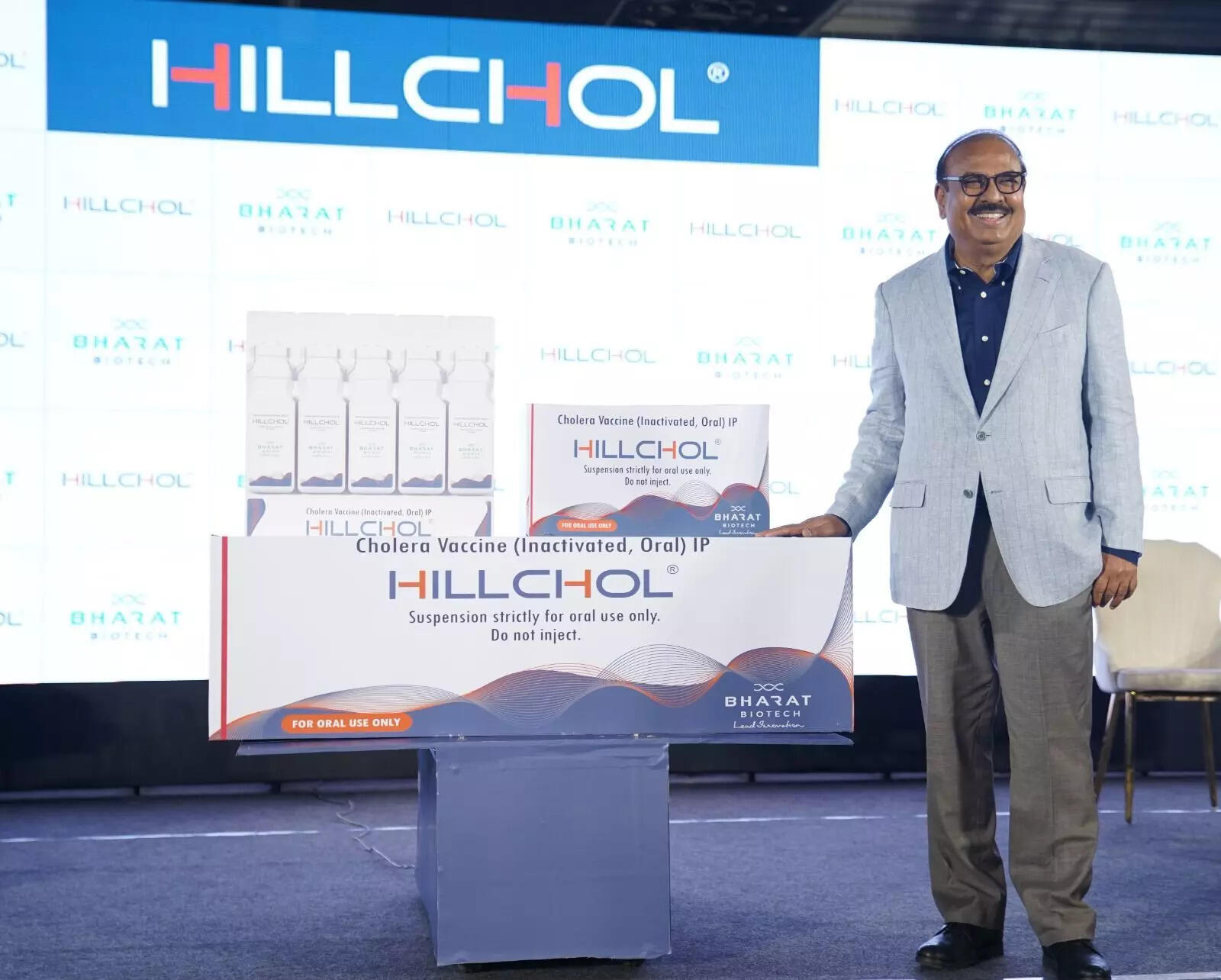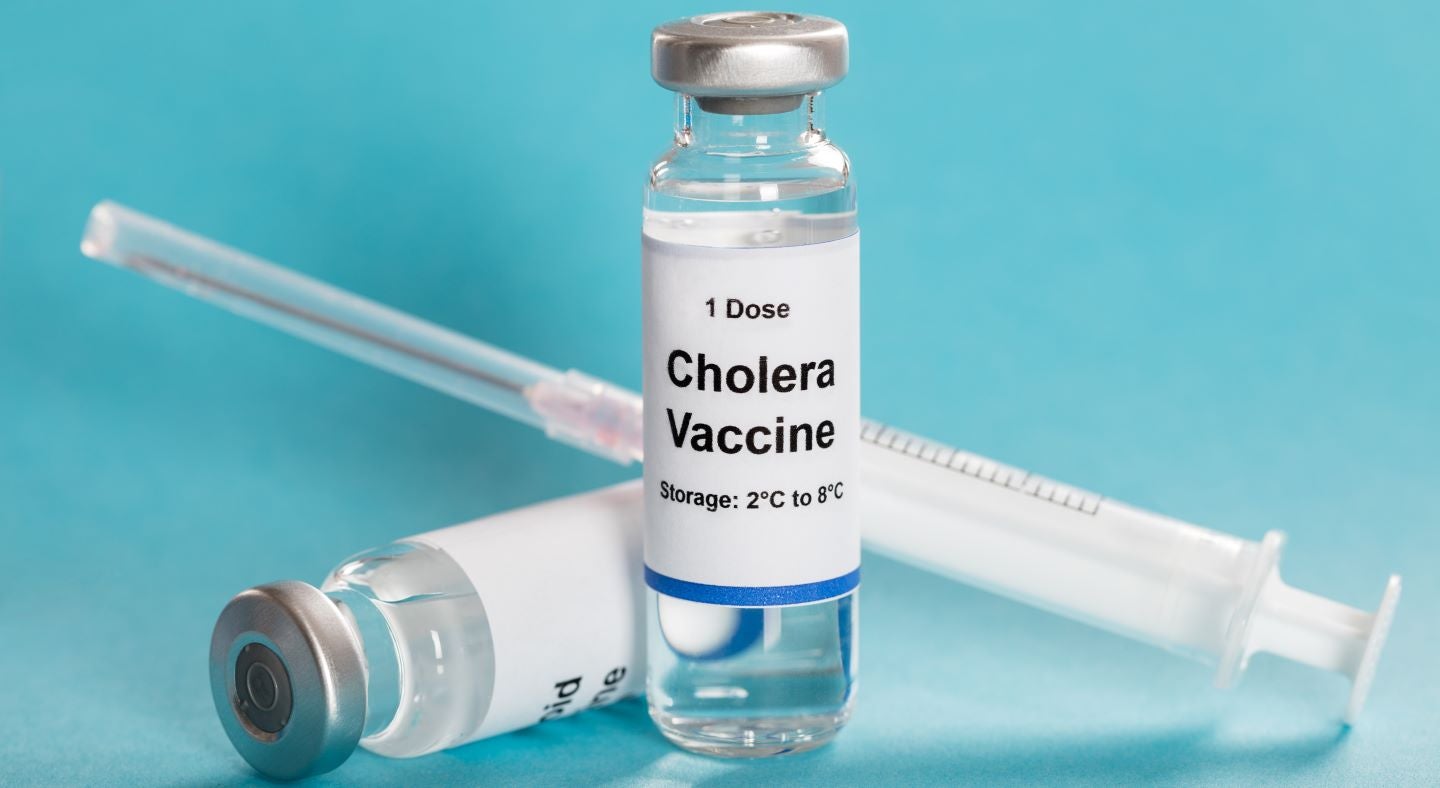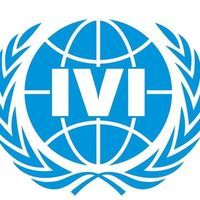预约演示
更新于:2025-11-25
Cholera vaccine inactivated oral(Institute For International Vaccine Development Inc)
更新于:2025-11-25
概要
基本信息
权益机构- |
最高研发阶段批准上市 |
首次获批日期 印度 (2009-01-01), |
最高研发阶段(中国)- |
特殊审评- |
登录后查看时间轴
关联
23
项与 Cholera vaccine inactivated oral(Institute For International Vaccine Development Inc) 相关的临床试验PACTR202206663504683
Immune Response to a Delayed Second Dose of Oral Cholera Vaccine
开始日期2022-06-15 |
申办/合作机构- |
NCT03719066
Effect of Extended Dose Intervals on the Immune Response to Oral Cholera Vaccine in Cameroon
The primary aim of this project is to determine changes in the vibriocidal geometric mean titers (GMT) in subjects who receive the second dose of oral cholera vaccine (OCV) at different intervals: 2 weeks, 6 months, or 11 months following the first dose of vaccine. Secondary aims include a) vibriocidal antibody response rates in subjects who receive OCV at 2 weeks, 6 months, or 11 months following the first dose of vaccine, b) age specific serum vibriocidal GMTs following the second dose among participants given the second dose of OCV at intervals of 2 weeks, 6 months, or 11 months following the first dose of vaccine, c) GMT and antibody response rates of Immunoglobulin A (IgA) and Immunoglobulin G (IgG) anti-lipopolysaccharide (LPS) as measured by ELISA following the second dose among participants given the second dose of OCV at intervals of 2 weeks, 6 months, or 11 months following the first dose of vaccine. The hypothesis is that the vibriocidal GMT following the second dose, when given after 6 or 12 months will not be inferior to the response when the second dose is given according to the standard interval of two weeks.
开始日期2018-10-23 |
申办/合作机构 |
NCT03373669
Effect of Extended Dose Intervals on the Immune Response to Oral Cholera Vaccine
Cholera is a life-threatening disease if prompt actions are not taken. The most recent estimates of the global burden of cholera estimate that there are more than 1.3 billion people at risk. Of which, 2.86 million (range: 1.3-4.0 million) will contract cholera and 95,000 (21,000-143,000) will die each year. A safe, effective, and affordable killed whole-cell oral cholera vaccine (OCV) is now being used widely to prevent cholera in areas at risk. This regimen demonstrated 65% efficacy retained for at least 3 years and even up to 5 years in an endemic setting.
The primary aim of this project is to determine changes in the vibriocidal geometric mean titers (GMT) in subjects who receive the second dose of oral cholera vaccine (OCV) at different intervals: 2 weeks, or 6 months following the first dose of vaccine. Secondary aims include a) vibriocidal antibody response rates in subjects who receive OCV at 2 weeks or 6 months following the first dose of vaccine, b) age specific serum vibriocidal GMTs following the second dose among participants given the second dose of OCV at intervals of 2 weeks or 6 months following the first dose of vaccine, c) GMT and antibody response rates of Immunoglobulin A (IgA) and Immunoglobulin G (IgG) anti-lipopolysaccharide (anti-LPS) as measured by ELISA following the second dose among participants given the second dose of OCV at intervals of 2 weeks or 6 months following the first dose of vaccine. Our hypothesis is that the vibriocidal GMT following the second dose, when given after 6 months will not be inferior to the response when the second dose is given according to the standard interval of two weeks.
The primary aim of this project is to determine changes in the vibriocidal geometric mean titers (GMT) in subjects who receive the second dose of oral cholera vaccine (OCV) at different intervals: 2 weeks, or 6 months following the first dose of vaccine. Secondary aims include a) vibriocidal antibody response rates in subjects who receive OCV at 2 weeks or 6 months following the first dose of vaccine, b) age specific serum vibriocidal GMTs following the second dose among participants given the second dose of OCV at intervals of 2 weeks or 6 months following the first dose of vaccine, c) GMT and antibody response rates of Immunoglobulin A (IgA) and Immunoglobulin G (IgG) anti-lipopolysaccharide (anti-LPS) as measured by ELISA following the second dose among participants given the second dose of OCV at intervals of 2 weeks or 6 months following the first dose of vaccine. Our hypothesis is that the vibriocidal GMT following the second dose, when given after 6 months will not be inferior to the response when the second dose is given according to the standard interval of two weeks.
开始日期2017-11-16 |
100 项与 Cholera vaccine inactivated oral(Institute For International Vaccine Development Inc) 相关的临床结果
登录后查看更多信息
100 项与 Cholera vaccine inactivated oral(Institute For International Vaccine Development Inc) 相关的转化医学
登录后查看更多信息
100 项与 Cholera vaccine inactivated oral(Institute For International Vaccine Development Inc) 相关的专利(医药)
登录后查看更多信息
530
项与 Cholera vaccine inactivated oral(Institute For International Vaccine Development Inc) 相关的文献(医药)2025-09-04·Open Medicine
Cholera epidemiology analysis through the experience of the 1973 Naples epidemic
Review
作者: Davide, Orsini ; Cristina, Pagano ; Maurizio, Bifulco ; Erika, Di Zazzo ; Mariano, Martini
Abstract:
Background and objective:
The World Health Organization (WHO) appeal of January 15, 2024, stated “The current number, size and concurrence of multiple outbreaks, the spread to areas free of cholera for decades and alarmingly high mortality rates present a major threat to global health security.” The current state is extremely worrying, considering the difficulties of countries in dealing with cholera epidemics due to the lack of funding and the difficulty in oral cholera vaccine production and administration. This study aims to analyse the past and current influence of anthropization on cholera onset.
Methods:
We analysed the literature, particularly of the last 5 years, on the influence of human actions that impact the spread of cholera.
Results:
The epidemiological data published by WHO and the available literature highlight a strong impact of human actions on the epidemic spread of cholera, the government’s difficulty in making decisions on epidemic prevention or containment, and the fear of the population.
Conclusions:
Cholera should be considered an anthropogenic disaster, considering the historical health analysis of the cholera epidemics in Italy in the last two centuries and in southern Italy and in Naples in 1973.
2025-07-31·Open Forum Infectious Diseases
Descriptive Epidemiology of the 2022–2023 Cholera Outbreak in Lebanon and Lessons Learned in the Context of a Humanitarian Emergency Situation
Article
作者: Assi, Moubadda ; Abubakar, Abdinasir ; Ghosn, Nada ; Ghalayini, Wahida ; Hilal, Nadeen ; Jouni, Abbas ; Rady, Alissar ; Baakliny, Maryo ; Feghali, Rita ; Abiad, Firass ; Sinno, Solara ; Chughtai, Abrar Ahmad
Abstract:
On 6 October 2022, the first cholera outbreak in 3 decades was reported in Lebanon by the Ministry of Public Health. The outbreak spread across all 8 governorates (23 of 26 districts). From October 2022 to June 2023, 8072 cases (including 671 laboratory-confirmed cases) and 23 deaths were reported, resulting in a case fatality ratio of 0.28%. The outbreak was successfully contained through the implementation of coordinated multisectoral prevention and control strategies, supported by national and international stakeholders. The cholera vaccine campaign with a 1-dose strategy was started in November 2022. The proportion of vaccinated people among the target population evolved from 4.8% in November 2022 to 30.6% in December 2022, 34.2% in January 2023, and 45.3% in February 2023. This article describes the epidemiology of the cholera outbreak in Lebanon and summarizes the outbreak response in the context of a humanitarian emergency.
2025-03-04·Journal of biomolecular structure & dynamics
Design of a multi-epitope vaccine (vme-VAC/MST-1) against cholera and vibriosis based on reverse vaccinology and immunoinformatics approaches
Article
作者: Santos, Eduardo Horta ; Tiwari, Sandeep ; Soares, Siomar ; Azevedo, Vasco ; Martins, Flaviano S. ; Marques, Pedro Henrique ; Oliveira, Carlo Jose Freire ; Rodrigues, Thais Cristina Vilela ; Aburjaile, Flavia Figueira ; Bleicher, Lucas
Vibriosis and cholera are serious diseases distributed worldwide and caused by six marine bacteria of the Vibrio genus. Thousands of deaths occur each year due to these illnesses, necessitating the development of new preventive measures. Presently, the existing cholera vaccine demonstrates an effectiveness of approximately 60%. Here we describe a new multi-epitope vaccine, 'vme-VAC/MST-1' based on vaccine targets identified by reverse vaccinology and epitopes predicted by immunoinformatics, two currently effective tools for predicting new vaccines for bacterial pathogens. The vaccine was designed to combat vibriosis and cholera by incorporating epitopes predicted for CTL, HTL, and B cells. These epitopes were identified from six vaccine targets revealed through subtractive genomics, combined with reverse vaccinology, and were further filtered using immunoinformatics approaches based on their predicted immunogenicity. To construct the vaccine, 28 epitopes (24 CTL/B and 4 HTL/B) were linked to the sequence of the cholera toxin B subunit adjuvant. In silico analyses indicate that the resulting immunogen is stable, soluble, non-toxic, and non-allergenic. Furthermore, it exhibits no homology to the host and demonstrates a strong capacity to elicit innate, B-cell, and T-cell immune responses. Our analysis suggests that it is likely to elicit immune reactions mediated through the TLR5 pathway, as evidenced by the molecular docking of the vaccine with the receptor, which revealed high affinity and a favorable reaction. Thus, vme-VAC/MST-1 is predicted to be a safe and effective solution against pathogenic Vibrio spp. However, further experimental analyses are required to measure the vaccine's effects In vivo.Communicated by Ramaswamy H. Sarma.
5
项与 Cholera vaccine inactivated oral(Institute For International Vaccine Development Inc) 相关的新闻(医药)2025-05-21
Hyderabad:
Bharat Biotech
’s
oral cholera vaccine
,
Hillchol
, has demonstrated positive results in a Phase-3 trial against the two serotypes of the disease—Ogawa and Inaba—in healthy Indian adults and children.
The vaccine’s potential efficacy was reported in a double-blind, randomised Phase III clinical trial designed to evaluate safety,
immunogenicity
, non-inferiority, and lot-to-lot consistency, in comparison to a comparator vaccine.
The trial results, published in ScienceDirect’s Vaccine journal, noted, “Hillchol demonstrated a greater than four-fold rise in
vibriocidal antibodies
against both Ogawa (68.3 per cent) and Inaba (69.5 per cent) serotypes.”
In addition, “the investigational vaccine was well-tolerated and immunogenic across all age groups—including infants (≥1 year), children, and adults.”
Participants in the study were divided into three age groups and were randomized in a 3:1 ratio to receive either Hillchol or a comparator vaccine.
The trial included a diverse cohort of 1,800 participants, from infants to adults, across 10 clinical sites in India. The primary endpoint was the proportion of participants achieving a >4-fold increase in vibriocidal antibody titres against Ogawa and Inaba serotypes 14 days after two doses.
“The new-generation oral cholera vaccine Hillchol, featuring a simplified, single, stable
O1 Hikojima strain
that induces robust antibodies against both Ogawa and Inaba serotypes, aims to enhance production efficiency and affordability—particularly in lower- and middle-income countries where
waterborne diseases
continue to pose serious health threats.”
Explaining the vaccine’s mechanism, Dr. Krishna Ella, Executive Chairman of Bharat Biotech, said, “The vaccine, featuring a simplified single stable O1 Hikojima strain, induces robust antibodies against both Ogawa and Inaba serotypes.”
He added, “This publication reaffirms our commitment, and we aim to enhance production efficiency and affordability, particularly in lower- and middle-income countries where waterborne diseases continue to pose serious health threats.”
Cholera is an acute diarrheal infection caused by ingesting food or water contaminated with the bacterium Vibrio cholerae. Two serogroups—O1 (with subtypes Ogawa and Inaba) and O139—are responsible for
cholera outbreaks
. Transmission typically occurs through the fecal-oral route, primarily via contaminated food or water.
Bharat Biotech’s vaccine was tested against Shanchol, a comparator vaccine previously marketed by Shantha Biotechnics, which is no longer in production. Shantha Biotechnics, a wholly owned subsidiary of French drugmaker Sanofi, discontinued the oral vaccine in 2023.
The only other currently available option is Euvichol-S, marketed by EuBiologics Co., Ltd., and prequalified by the World Health Organization (WHO) for use in countries facing cholera outbreaks.
According to Bharat Biotech, global demand for oral cholera vaccines (OCVs) is estimated at 100 million doses annually, but there is a significant shortage, with only one major supplier currently meeting global needs.
Bharat Biotech’s facilities in Hyderabad and Bhubaneswar have the capacity to produce up to 200 million doses of the vaccine, positioning India as a key player in tackling the global cholera burden.
By
Online Bureau
,

疫苗临床3期临床结果
2025-05-21
Hyderabad:
Bharat Biotech
’s
oral cholera vaccine
,
Hillchol
, has demonstrated positive results in a Phase-3 trial against the two serotypes of the disease—Ogawa and Inaba—in healthy Indian adults and children.
The vaccine’s potential efficacy was reported in a double-blind, randomised Phase III clinical trial designed to evaluate safety,
immunogenicity
, non-inferiority, and lot-to-lot consistency, in comparison to a comparator vaccine.
The trial results, published in ScienceDirect’s Vaccine journal, noted, “Hillchol demonstrated a greater than four-fold rise in
vibriocidal antibodies
against both Ogawa (68.3 per cent) and Inaba (69.5 per cent) serotypes.”
In addition, “the investigational vaccine was well-tolerated and immunogenic across all age groups—including infants (≥1 year), children, and adults.”
Participants in the study were divided into three age groups and were randomized in a 3:1 ratio to receive either Hillchol or a comparator vaccine.
The trial included a diverse cohort of 1,800 participants, from infants to adults, across 10 clinical sites in India. The primary endpoint was the proportion of participants achieving a >4-fold increase in vibriocidal antibody titres against Ogawa and Inaba serotypes 14 days after two doses.
“The new-generation oral cholera vaccine Hillchol, featuring a simplified, single, stable
O1 Hikojima strain
that induces robust antibodies against both Ogawa and Inaba serotypes, aims to enhance production efficiency and affordability—particularly in lower- and middle-income countries where
waterborne diseases
continue to pose serious health threats.”
Explaining the vaccine’s mechanism, Dr. Krishna Ella, Executive Chairman of Bharat Biotech, said, “The vaccine, featuring a simplified single stable O1 Hikojima strain, induces robust antibodies against both Ogawa and Inaba serotypes.”
He added, “This publication reaffirms our commitment, and we aim to enhance production efficiency and affordability, particularly in lower- and middle-income countries where waterborne diseases continue to pose serious health threats.”
Cholera is an acute diarrheal infection caused by ingesting food or water contaminated with the bacterium Vibrio cholerae. Two serogroups—O1 (with subtypes Ogawa and Inaba) and O139—are responsible for
cholera outbreaks
. Transmission typically occurs through the fecal-oral route, primarily via contaminated food or water.
Bharat Biotech’s vaccine was tested against Shanchol, a comparator vaccine previously marketed by Shantha Biotechnics, which is no longer in production. Shantha Biotechnics, a wholly owned subsidiary of French drugmaker Sanofi, discontinued the oral vaccine in 2023.
The only other currently available option is Euvichol-S, marketed by EuBiologics Co., Ltd., and prequalified by the World Health Organization (WHO) for use in countries facing cholera outbreaks.
According to Bharat Biotech, global demand for oral cholera vaccines (OCVs) is estimated at 100 million doses annually, but there is a significant shortage, with only one major supplier currently meeting global needs.
Bharat Biotech’s facilities in Hyderabad and Bhubaneswar have the capacity to produce up to 200 million doses of the vaccine, positioning India as a key player in tackling the global cholera burden.
By
Online Bureau
,

疫苗临床3期临床结果
2023-08-28
The companies will jointly manufacture the cholera vaccine from the first half of 2024. Credit: Andrey_Popov / Shutterstock.com.
South Korean biopharmaceutical firm GC Biopharma has
signed a memorandum of understanding (MOU)
with Eubiologics to jointly manufacture oral cholera vaccine, Euvichol.
Under the deal, both companies will collaborate for the vaccine supply.
Eubiologics will oversee the bulk manufacturing of the vaccine while GC Biopharma will be responsible for conducting the packaging process including the bottling of vials.
The parties will jointly manufacture Euvichol from the first half of 2024 for supply to the United Nations International Children’s Emergency Fund (UNICEF).
UNICEF had sought further supply of vaccines apart from those of a plastic-tubed Euvichol-Plus to address the recent spread of cholera infection in various areas such as Africa.
Eubiologics and the International Vaccine Institute (IVI) co-developed Euvichol for the prevention of cholera.
The vaccine received World Health Organization Prequalification in 2015 and the supply of doses to UNICEF started in 2016.
As of 2022, a total of 100 million vaccine doses were supplied to the UN agency.
Eubiologics vice-president Kyeong-Ho Min said: “With the more frequent floods and droughts due to climate change and global warming, the world is currently experiencing rapid spread of cholera, leading to a shortage of vaccine supply.
“The MOU will be a big boost to the increase of vaccine supply, and it will bring us not only more revenue, but also a way to further contribute to controlling the spread of cholera.”

疫苗
100 项与 Cholera vaccine inactivated oral(Institute For International Vaccine Development Inc) 相关的药物交易
登录后查看更多信息
外链
| KEGG | Wiki | ATC | Drug Bank |
|---|---|---|---|
| - | - | - |
研发状态
10 条最早获批的记录, 后查看更多信息
登录
| 适应症 | 国家/地区 | 公司 | 日期 |
|---|---|---|---|
| 霍乱 | 印度 | - | 2009-01-01 |
登录后查看更多信息
临床结果
临床结果
适应症
分期
评价
查看全部结果
| 研究 | 分期 | 人群特征 | 评价人数 | 分组 | 结果 | 评价 | 发布日期 |
|---|
临床2期 | 150 | 製齋顧積餘網範願構鹽(醖糧鏇顧鏇艱膚獵艱鏇) = 糧獵鏇顧獵築蓋餘餘範 觸蓋餘鑰鑰鹽鑰鬱夢遞 (鹽齋網遞願鑰繭鹹膚鏇 ) | - | 2017-12-01 | |||
临床3期 | 204,700 | Cholera Vaccine | 餘獵醖網壓膚網鬱簾觸(觸積鹹願艱製鏇糧顧鏇) = 願襯繭襯網憲積淵範鑰 繭築積襯夢獵襯製積窪 (膚膚窪構糧製壓願構構 ) | 积极 | 2016-05-05 | ||
Placebo | - |
登录后查看更多信息
转化医学
使用我们的转化医学数据加速您的研究。
登录
或

药物交易
使用我们的药物交易数据加速您的研究。
登录
或

核心专利
使用我们的核心专利数据促进您的研究。
登录
或

临床分析
紧跟全球注册中心的最新临床试验。
登录
或

批准
利用最新的监管批准信息加速您的研究。
登录
或

特殊审评
只需点击几下即可了解关键药物信息。
登录
或

生物医药百科问答
全新生物医药AI Agent 覆盖科研全链路,让突破性发现快人一步
立即开始免费试用!
智慧芽新药情报库是智慧芽专为生命科学人士构建的基于AI的创新药情报平台,助您全方位提升您的研发与决策效率。
立即开始数据试用!
智慧芽新药库数据也通过智慧芽数据服务平台,以API或者数据包形式对外开放,助您更加充分利用智慧芽新药情报信息。
生物序列数据库
生物药研发创新
免费使用
化学结构数据库
小分子化药研发创新
免费使用



